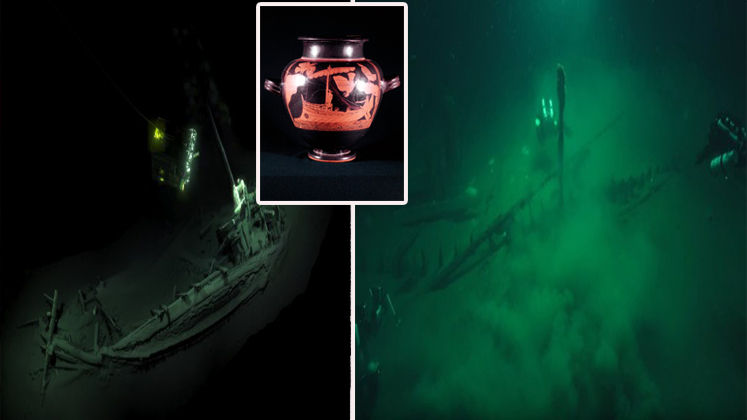In 1513, when Piri Reis drew his map, Antarctica remained undiscovered by our civilization, only officially sighted in 1818. Compiled from over 20 earlier source maps, some dating back before the time of Christ, the Piri Reis map is a cartographic enigma. Could it hint at a time when Antarctica was a lush, green jungle rather than an icy wasteland? This map, renowned for its astonishing precision, intriguingly appears to depict Antarctica’s coastline—centuries before its discovery. This raises compelling questions: Was Antarctica once ice-free, teeming with forests and wildlife? Could ancient maps like Piri Reis’s provide evidence of Earth’s dramatically shifting climates and landscapes?
Some speculate that Earth’s outer crust might occasionally shift, like the skin of an orange, potentially moving Antarctica from warmer to colder latitudes. In 1929, Gustaf Deissmann uncovered the Piri Reis map in Istanbul’s Topkapi Palace library. Drawn on gazelle skin by Ottoman Turkish admiral and cartographer Piri Reis in 1513, this world map incorporates features seemingly unknown at the time, captivating scholars, historians, and conspiracy theorists. Its detailed and accurate depictions of coastlines, particularly what some interpret as Antarctica, mapped over three centuries before its 1820 discovery by a Russian expedition, fuel intrigue. The map’s precision in charting South America’s eastern coast and the Caribbean surpasses many contemporary maps, with Brazil’s coastline meticulously detailed, including river inlets and capes often overlooked or misrepresented by European cartographers of the era.
Rich with annotations, the map offers historical context, detailing ocean currents, ethnographic insights from early European-indigenous encounters, and even mythical elements like legendary islands and sea creatures, reflecting 16th-century seafaring culture. Most intriguingly, it portrays a southern landmass connected to South America by a narrow isthmus, with geographical features—mountain ranges, bays, and inlets—eerily resembling Antarctica’s subglacial topography, as revealed by modern seismic data. This depiction, speculative yet striking, suggests Piri Reis accessed remarkably ancient and accurate source maps.
The Piri Reis map sparks theories of advanced ancient maritime civilizations, challenging historical timelines. Such a civilization would require sophisticated astronomy, mathematics, and physics, akin to the Maya or ancient Egyptians. Shared architectural styles, like pyramids in Mesoamerica and Egypt, and widespread myths hint at global interactions facilitated by seafaring expertise, possibly passing down cartographic knowledge. The legend of Atlantis, described by Plato as a lost, advanced civilization, resonates with these ideas, though archaeologists often dismiss it as myth. Similarly, sites like Göbekli Tepe in Turkey, with 10,000-year-old megalithic structures predating Stonehenge, suggest early societies possessed advanced knowledge, potentially including navigation and mapmaking. Underwater structures like Japan’s Yonaguni Monument further fuel speculation about prehistoric maritime civilizations.
The Vinland Map, purportedly from the 15th century, depicts Norse-explored Vinland (modern-day North America), predating Columbus. Its authenticity is debated, but if genuine, it underscores early cartographic prowess. Likewise, the 1402 Kangnido map from Korea’s Joseon dynasty accurately depicts the known world, emphasizing Asia’s geopolitical landscape. Ming Dynasty maps, like the Da Ming Hun Yi Tu, showcase advanced Chinese cartography, prioritizing landmasses and political boundaries with grid systems and consistent scales, unlike European maps focused on maritime exploration.
Project High Jump, led by Admiral Richard E. Byrd in the 1940s, was a massive U.S. Navy expedition to Antarctica, involving 4,700 personnel, 13 ships, and innovative technologies like helicopters and aircraft. Covering 1.5 million square kilometers, it mapped uncharted territory, tested cold-weather gear, and laid groundwork for the Antarctic Treaty System. Beyond science, it was a geopolitical statement amid the Cold War, asserting U.S. presence in Antarctica. Conspiracy theories suggest High Jump sought exotic technologies or ancient civilizations, even a secret German base from the 1938–39 German Antarctic Expedition. Allegations of German drilling for minerals or establishing “Base 211” persist, but the technological limitations of the era make these claims improbable. While official records emphasize scientific achievements, these theories weave historical intrigue with speculative narratives, captivating imaginations about Antarctica’s hidden past.






















